20 Useful Microsoft Windows 8.1 Tips & Tricks
With the upgrade from Windows 8 to 8.1, Microsoft has made several changes mainly to improve on certain aspects that Windows 8 has received criticism for. For starters, there’s the return of the good old Start button, ability to create a lock screen slideshow, and even support for 3D printing!
We have got for you here a list of 20 useful tips and tricks for Windows 8.1. Whether you are entirely new to or beginning to get familiar with Windows 8.1, the following list should help you get the most out of this latest offering by Microsoft.
1. View Options From the Start Button
The Start button is back. It is similar to the Start button found on Windows 7. Left-click on the button (bottom left of the screen) and it will redirect you to the Start Screen. If you right-click on it, it will show options for Run, Search, Desktop, Shut Down, and many more.
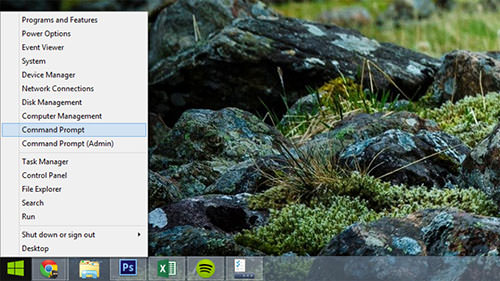
2. Log In Straight to Desktop
When you start your computer, by default it will take you to the Start Screen. There is a way to start your computer and go straight to the Desktop instead. Right-click on the desktop toolbar, select Properties and go to the Navigation tab. Under the Start Screen options, enable the box “When I sign in or close all applications on a screen, go to the desktop instead of Start”.
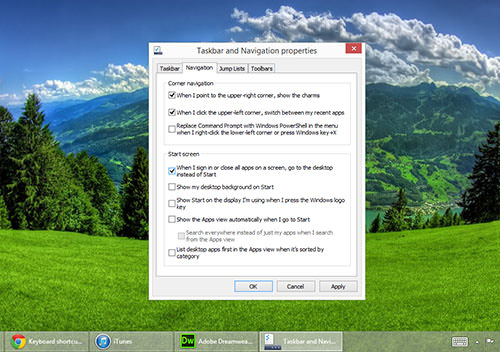
3. Customize Home Screen Tiles
Besides resizing icons, you can also customize your home screen tiles on Windows 8.1. To move and group tiles, just go to your Start Screen and right-click on any of the tiles. After grouping your tiles, you can also name them by filling in the Name Group field.

4. Customize Start Screen Background
Windows 8.1 also allows you to customize your start screen. Just swipe the Settings Charm menu and tap on Settings. Click on Personalize to change the colors of the background as well as the accent.
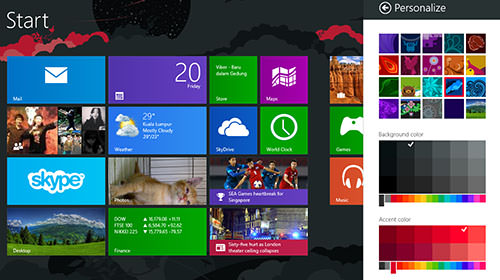
5. Create A Lock Screen Slideshow
Previously, your Windows lock screen could only be a static photo. On Windows 8.1, you are able to create a lock screen slideshow with your favorite photos. To do this, go to the Settings Charm menu, click on Change PC Settings, select PC and Devices then click on Lock Screen. Enable the option On to create a lock screen slideshow.
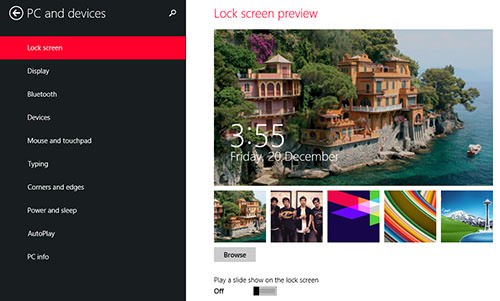
6. Use Internet Explorer 11 Reading View
When you load any webpage using Internet Explorer 11, a Reading View icon can be seen on the address bar. If you click on it, Internet Explorer will automatically reload the page and display a clean version – free of ads. This makes it very easy to read as there are no distractions. However, this feature is not available for the desktop version of Internet Explorer 11.
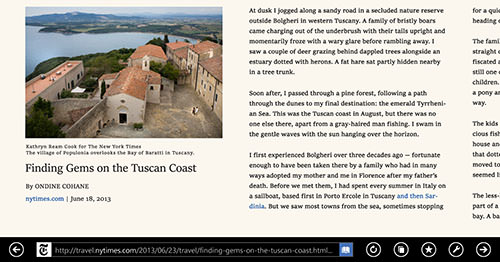
7. Make Use of 3D Printing Support
Windows 8.1 is the first operating system to provide support for 3D printing! You can print from the Windows Store apps and desktop applications.
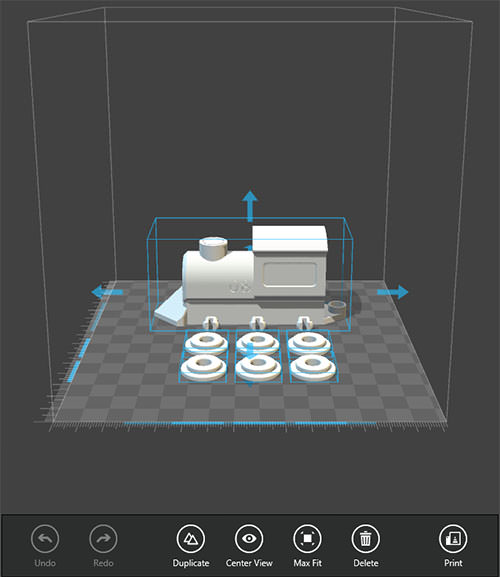
8. Customize Privacy Options
Windows 8.1 offers you options to set what devices and data are used by apps found in the Windows Store. You can allow or block apps from accessing your personal information. You are also able to turn off your advertising ID so that advertisers do not use your personal data to display personalised ads. To customize these settings, go to Change PC settings and navigate to Privacy.

9. Smart Files
Smart Files is a new feature on Windows 8.1 that allows you to view your SkyDrive files without having to download everything onto your computer. When you browse through your SkyDrive folder in File Explorer, you’ll see a column called Availability.
By default, all the files are listed as Online-only, which means that as long as you are connected to the Internet, you can view the files without actually having them on your computer’s hard drive. If you want a particular SkyDrive file or folder to be available offline, just right-click on it and select the Make available offline option.

10. Customize Quiet Hours
Integrated notification pop-ups were first introduced on Windows 8. What’s new on Windows 8.1 is the option to turn the notifications off or set a period of time for which the notifications may appear. To do this, go to Change PC settings, click on Search and Apps, select Notifications, and configure the relevant options.
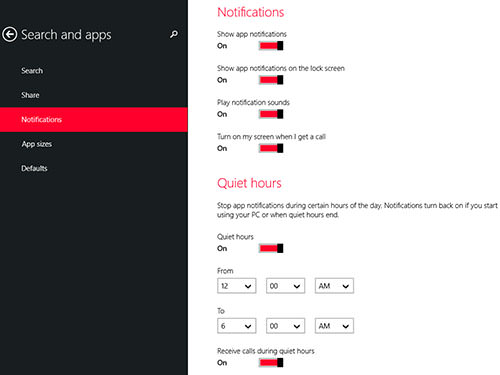
11. More Windowing Options for New Style Apps
On Windows 8, users could split their screen to run up to 8 apps on two 2560 x 1600 monitors. Depending on your screen size, some may only be able to split and run 2 apps. On Windows 8.1, you can do all that and more – you can add another app and resize it so that it runs horizontally (see screenshot). However, that works only if the developer has allowed it for the app.
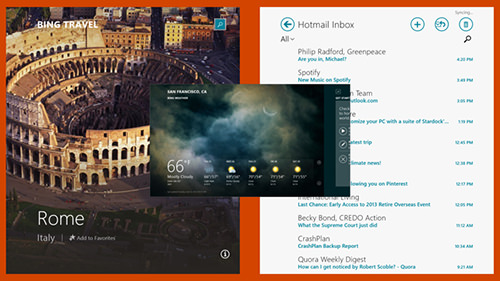
12. Scale Each Screen Independently
In the past, Windows allowed you to scale up icons and fonts to a maximum of 500%. However, what is best for your screen may not necessarily translate on a secondary display. Text and icons may not be in proportion to one another. To solve this problem, Windows 8.1 allows you to scale each screen independently. To customize these settings, right-click on the Windows Desktop, select Screen Resolution, and select Make text and other items larger or smaller.

13. Discover The App Bars
The App bar is featured on every new Windows 8.1 app. To enable this option, right-click on the app’s screen and it will show the app’s functions and options.
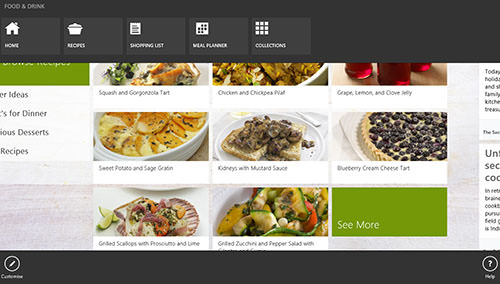
14. Configure Automatic App Updates
Unlike Windows 8, app updates in Windows 8.1 will be automatically installed by default without the user’s consent. To stop this from happening, open Windows Store and access the Settings Charm menu – the charm must only be activated once in the Windows Store or else it will not display the required menus. In the Settings Charm menu, select Settings and navigate to App Updates. Enable or disable the option to automatically update apps.
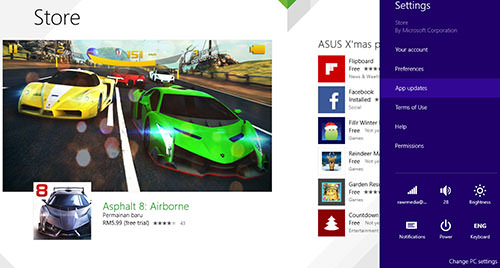
15. Prevent Apps From Running in The Background
Previously on Windows 8, when you drag a Start Screen app down to the bottom of the screen, it will close the app. However, on Windows 8.1, this action will only make the app disappear – it is still running in the background. To close the app, drag the app down to the bottom of the screen but instead of letting it go, hold on to it. Wait until the app card flips over, and only now the app is closed.
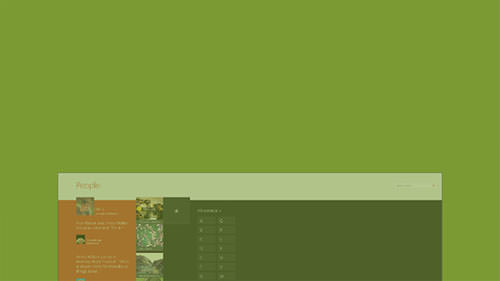
16. Use Hands-Free Mode
One of the coolest features that not many know about is found in the new Food & Drink app. If you do not like to get your computer all dirty when you are cooking, then this app is for you. Going through the recipe, you can set the app on Hands-Free Mode. It will detect your hand motion via your computer’s webcam.
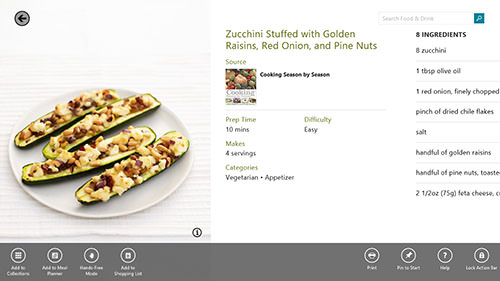
17. Restore Libraries
By default, Windows 8.1 has hidden Libraries. If you want to get it back, open File Explorer and you will find the newly renamed This PC view. Here, select View, and click on Navigation pane. Lastly, enable the option to Show Libraries.

18. Delete Old Windows Installation Files
When you upgrade from an old version of Windows, Windows keeps a C:\Windows.old with your old files. You can delete this folder to free up some storage space. To do this, Search for Disk Cleanup, and click on Free up disk space shortcut. Next, click on Clean up system files, enable the Previous Windows Installation(s) option, and run a disk cleanup. If this option does not appear, that means there is nothing to clean up.

19. Use Help & Tips App
For further help on how to get the most out of Windows 8.1, an app has been added to guide you on pretty much everything. There are short animations to show you the correct gestures and concepts to master Windows 8.1. You can find this app on the Start Screen, titled Help+Tips.

20. Use Keyboard Shortcuts
Last but not least, we have put together a list of 15 new keyboard shortcuts you can use on Windows 8.1.
| Shortcut | Action |
| Windows Key + S | Open Search Charm to search Windows and Web |
| Windows Key + Q | Search within the opened app |
| Windows Key + F | Search files |
| Windows Key + Z | Get Commands and Context Menus within an app |
| Windows Key + . + Right Arrow | Snap app to the right |
| Windows Key + . + Left Arrow | Snap app to the left |
| Ctrl + plus (+) | Zoom in on Start Screen |
| Ctrl + Minus (-) | Zoom out on Start Screen |
| Windows Key + Down Arrow | Close an app |
| Windows Key + Start Typing | Search your PC |
| Windows Key + O | Lock the screen orientation (portrait or landscape) |
| Windows Key + Ctrl + Spacebar | Change to a previously selected input language |
| Windows Key + P | Choose a presentation display mode |
| Windows Key + X | Open Start Button options |
| Windows Key + Home | Minimize all but the active desktop window |